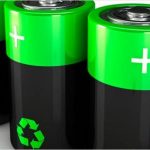
Inspired by nature, new “slippery rough surface” material harvests water out of air
Monday, May 14, 2018 by David Williams
http://www.futuresciencenews.com/2018-05-14-inspired-by-nature-new-slippery-rough-surface-material-harvests-water-out-of-air.html

There are many places in the world suffering from water shortages. As such, scientists are constantly looking for ways to alleviate this, trying to come up with possible solutions that can be implemented in the real world today. Now a group of researchers from Penn State and the University of Texas at Dallas (UT Dallas) have developed a product that might be of use.
The research team, which published the details of their work recently in the journal Science Advances under a paper titled, “Hydrophilic Directional Rough Surfaces for Water Harvesting,” successfully developed a material that outperforms existing solutions for water harvesting. They call it a slippery rough surface (SRS), and stated that they drew inspiration for it from pitcher plants as well as rice leaves, which both have the ability to harvest water from the air.
Based on a report about the study, the research team pitted their creation against two other solutions to the same problem, namely a slippery liquid-infused surface (SLIPS) and a superhydrophobic surface. Compared to these other “state-of-the-art” liquid repellent surfaces, the SRS made by the research team consistently came out on top in terms of water harvesting. (Related: Fog harvesting could help alleviate water shortages.)
According to Tak-Sing Wong, a Wormley Family Early Career Professor in Engineering, assistant professor of mechanical engineering, and the project’s leader, their method could help solve the problem with water shortages worldwide. “With an estimated four billion people living in a situation of water scarcity during at least some part of the year, an inexpensive method for harvesting water from water vapor or from fog droplets in air could have enormous practical applications,” he explained, “and will help alleviate the water scarcity issues in many regions of the world.”
Comparing water harvesting technologies
It is said that there are a lot of water-harvesting technologies in existence, but that they are really not that efficient when used. This is mainly because of the fact that when water gets attracted to a hydrophilic surface, it tends to assume the form of a sheet and ends up clinging onto the surface, which makes it difficult to extract. It is fortunate that Wong’s postdoctoral scholar – and now-assistant professor at UT Dallas – Simon Dai, started looking at combining a number of biological strategies to come up with a slippery solution to the problem of water harvesting.
According to Dai, he applied principles taken directly from nature to build the new solution. “With SRS, we combined the slippery interface of pitcher plant with the surface architecture of rice leaf, which has micro/nanoscale directional grooves on its surface that allows water to be removed very easily in one direction but not the other,” he said.
Dai used hydrophilic chemistry in order to develop his pitcher plant-based slippery surface. He also added directional grooves and even gave the new surface a microscale roughness that ended up increasing its surface area. As a result, the rate of water and fog harvesting became directly proportional to the amount of surface area on which droplets are formed. Meanwhile, the grooves, which were inspired by rice leaves, are able to whisk water droplets away via gravity or simple capillary action.
The researchers hope that their solution could become mainstream. To that end, they are currently trying to optimize and scale up the SRS process in order to come up with a truly efficient water harvesting system that can offer clean water for places that need it the most.
Read more about other issues concerning water at CleanWater.news.
Sources include:
Tagged Under: Tags: clean water, fog harvesting, future tech, hydrophilic, hydrophobic, inspired by nature, liquid repellent surfaces, nature-inspired, slippery liquid-infused surface, slippery rough surface, SLIPS, SRS, superhydrophobic surface, water, water crisis, water from air, water harvesting, water scarcity, water shortage, water supply





